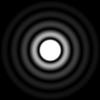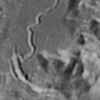
RGB vs. LRGB imaging
Started by
Neeraj
, Aug 07 2009 08:19 PM
12 replies to this topic
#1

Posted 07 August 2009 - 08:19 PM
I was hoping I could get some guidance on a few Newbie questions about RGB vs. LRGB imaging.
I'm several months into my astrophotography adventure and I've decided to move from a OSC camera to a mono w/ filters camera system. I live in a fairly light polluted environment so my goal is to do narrowband imaging in order to mitigate the harmful effects of the light pollution. I want to learn RGB imaging to get my image processing technique honed before I move to the more challenging Ha/OIII/SII narrowband imaging.
Here's the equipment I'm working with (note the equipment is far superior to my technique at this point):
Telescope: Takahashi TSA-102
Mount: Celestron CGE
Camera: FLI ML8300
Filter Wheel: FLI CFW 1-5
Filters: Astrodon LRGB filter set and a Ha filter
RGB imaging seems fairly straight forward, do the same amount of subs in each color, register, stack and do a master combine of the 3 channels to get a full color image. My first few attempts at this seem OK. However, I keep reading that I should do LRGB imaging instead, which leads to my questions.
Questions:
1) Why is LRGB imaging considered superior to RGB imaging? Better S/N ratio? Less time needed for imaging?
2) If I do LRGB, some folks say to do more L subs than RGB subs. Some folks say you can even 2x2 bin the RGB subs. If I have a fixed amount of time to image a target (say 120 mins) how should I divide my imaging time between the different channel subs? Does the binning matter, or stick to my normal 1x1 bin?
3) I'm thinking once I learn LRGB imaging it should be possible to do HaRGB images, using my Ha filter as a substiture for the L filter for emission type targets. Am I correct in that thought and is there any difference in imaging or processing that I would need to take into account for HaRGB?
I'm several months into my astrophotography adventure and I've decided to move from a OSC camera to a mono w/ filters camera system. I live in a fairly light polluted environment so my goal is to do narrowband imaging in order to mitigate the harmful effects of the light pollution. I want to learn RGB imaging to get my image processing technique honed before I move to the more challenging Ha/OIII/SII narrowband imaging.
Here's the equipment I'm working with (note the equipment is far superior to my technique at this point):
Telescope: Takahashi TSA-102
Mount: Celestron CGE
Camera: FLI ML8300
Filter Wheel: FLI CFW 1-5
Filters: Astrodon LRGB filter set and a Ha filter
RGB imaging seems fairly straight forward, do the same amount of subs in each color, register, stack and do a master combine of the 3 channels to get a full color image. My first few attempts at this seem OK. However, I keep reading that I should do LRGB imaging instead, which leads to my questions.
Questions:
1) Why is LRGB imaging considered superior to RGB imaging? Better S/N ratio? Less time needed for imaging?
2) If I do LRGB, some folks say to do more L subs than RGB subs. Some folks say you can even 2x2 bin the RGB subs. If I have a fixed amount of time to image a target (say 120 mins) how should I divide my imaging time between the different channel subs? Does the binning matter, or stick to my normal 1x1 bin?
3) I'm thinking once I learn LRGB imaging it should be possible to do HaRGB images, using my Ha filter as a substiture for the L filter for emission type targets. Am I correct in that thought and is there any difference in imaging or processing that I would need to take into account for HaRGB?
#2

Posted 07 August 2009 - 10:18 PM
With LRGB you use the unfitlered L channel to obtain all the detail of the object of interest. On ths note, you can therefore afford to bin for the RGB channels thereby cutting the time required since the detail is already obtained in the luminance channel. 2x2 binning increases the sensitivity twice the power to gather photons for the color channels. So if you have 120 mins you can maybe take 20 mins for each RGB sub.
You can also do Ha, SII and OIII colored channel imagine straight up just as well.
You can also do Ha, SII and OIII colored channel imagine straight up just as well.
#3

Posted 07 August 2009 - 10:47 PM
As has been said, the RGB just adds the colors and the Luminance is where the depth and details are found. Without the Luminance you tend to get a flat photo without the sharpness of LRGB. You can do a good job with cluster with just RGB though, they come out rather nicely without Luminance.
Blueman
Blueman
#4

Posted 07 August 2009 - 11:03 PM
Hi Neeraj,
I have a different approach to imaging. I believe that the color data is equal or if not more important than the luminance. It is the color that gives beauty to those celestial object. I do not bin my color images although you can. There is one approach that R Jay Gabany has done, that is to do synthetic luminance from your RGB data. You get the same results and add more color to your images. This is my choice for color images.
Since you are just starting I suggest that you read Ron Wodaski's book "the New CCD astronomy". That book has thought me and guided me for this past 3 years. Once you get the hang of processing RGB images or LRGB images then move to the HaRGB imaging.
Here is an example of synthetic Luminance color sLRGB:
http://www.pbase.com...617944/original
Here is an example of Ha+ Red as luminance:
http://www.pbase.com...105737590/large
I have a different approach to imaging. I believe that the color data is equal or if not more important than the luminance. It is the color that gives beauty to those celestial object. I do not bin my color images although you can. There is one approach that R Jay Gabany has done, that is to do synthetic luminance from your RGB data. You get the same results and add more color to your images. This is my choice for color images.
Since you are just starting I suggest that you read Ron Wodaski's book "the New CCD astronomy". That book has thought me and guided me for this past 3 years. Once you get the hang of processing RGB images or LRGB images then move to the HaRGB imaging.
Here is an example of synthetic Luminance color sLRGB:
http://www.pbase.com...617944/original
Here is an example of Ha+ Red as luminance:
http://www.pbase.com...105737590/large
#5

Posted 08 August 2009 - 05:25 AM
I have to agree with Mario. I tried going the bin2x rgb route and I've not been happy with the result. In my case, what I missed was color in the stars. What you do, with the 2x binned color images, is basically enlarge them to the L size before using them, in order for them to match. The stars get awfully big so you have to remove them from the color binned image and use the L stars instead. But the L stars are b/w, and a lot of the small stars in the fiels get all white colored. Only the big ones are able to retain the color from the rgb enlarged image.
However, I still sense the luminance has it's purpose. Granted, you can synthetize it from RGB, but you have to have a very good RGB to do that. You can still save time doing a fast rgb image, even if not binned, and take a longer set of L image, maybe with a dedicated filter. I use an IDAS LPS for this, and it enable me to capture much more details than with the normal RGB filters.
However, I still sense the luminance has it's purpose. Granted, you can synthetize it from RGB, but you have to have a very good RGB to do that. You can still save time doing a fast rgb image, even if not binned, and take a longer set of L image, maybe with a dedicated filter. I use an IDAS LPS for this, and it enable me to capture much more details than with the normal RGB filters.
#6

Posted 08 August 2009 - 06:28 AM
Indeed as mentioned. Binning can perhaps be looked upon as shortcut to save time in imaging, but to be as natural as possible, shooting at the native 1x1 mode is as pure as you can go. It depends on the object as well that you're imaging, which you might get away from. Ie. M13 per se doesn't have much color as Nebulas, so you can chance binning the RGB channels. Then again it depends on your comfort level - knowing that your image capture is the best it can be then always shoot at 1x1/no binning.
#7

Posted 08 August 2009 - 07:10 AM
My take:
- Bin 1x1
- Do LRGB
Having said that, do experiment with 2x2 for RGB and 1x1 for L, and also sometime do just RGB. Nothing like first hand experience to decide what works best *for you*.
- Bin 1x1
- Do LRGB
Having said that, do experiment with 2x2 for RGB and 1x1 for L, and also sometime do just RGB. Nothing like first hand experience to decide what works best *for you*.
#8

Posted 08 August 2009 - 09:44 AM
Although I have only been doing mono imaging for a short time, I am discovering that "the right tool for the right job" certainly applies to your data collection.
There are times when binning color 2x2 is a good idea (if the weather is turning and time is running out, or your target is getting into the trees, etc.) You can get color data much faster.
But I also discovered the joys of adding unbinned color data to my luminance channel to create an "uber-luminance".
Also, a lot of your technique will be dictated by your target. Is it Ha rich? Is it mostly reflection? A Dark nebula? You can focus on the filters that will give you the most desirable data.
There are times when binning color 2x2 is a good idea (if the weather is turning and time is running out, or your target is getting into the trees, etc.) You can get color data much faster.
But I also discovered the joys of adding unbinned color data to my luminance channel to create an "uber-luminance".
Also, a lot of your technique will be dictated by your target. Is it Ha rich? Is it mostly reflection? A Dark nebula? You can focus on the filters that will give you the most desirable data.
#9

Posted 08 August 2009 - 01:44 PM
Thank you all for your sharing your wisdom and advice.
I think I'm going to start with LRGB with 1x1 bins initially and then experiment from there.
Mario,
Your synthetic Luminance pictures are beautiful. They will give me something to aspire to. I'll also check out the book you recommended.
Neutronman,
You comment about "Also, a lot of your technique will be dictated by your target." is sound advice. I'm sure much of the fun in astrophotography will be learning different techniques for different target types.
I think I'm going to start with LRGB with 1x1 bins initially and then experiment from there.
Mario,
Your synthetic Luminance pictures are beautiful. They will give me something to aspire to. I'll also check out the book you recommended.
Neutronman,
You comment about "Also, a lot of your technique will be dictated by your target." is sound advice. I'm sure much of the fun in astrophotography will be learning different techniques for different target types.
#10

Posted 08 August 2009 - 01:56 PM
http://www.astro.uni...ntheticlum.html
Check out this link and it will show the results of Luminance, Synth RGB Luminance and RGBL combined.
There is a difference and I guess it depends on what your expectations are as to which to use.
Blueman
Check out this link and it will show the results of Luminance, Synth RGB Luminance and RGBL combined.
There is a difference and I guess it depends on what your expectations are as to which to use.
Blueman
#11

Posted 08 August 2009 - 06:39 PM
Unlike some here I've never had a problem with star color with LRGB imaging with color binned, easily getting color down to magnitude 22 or so. Binning color means I can do in 100 minutes what would take over 5 hours if I used RGB and 3 hours if color wasn't binned. It takes a bit more care putting the image together when LRGB is used as it can wash out color if the RGB isn't balanced to the L. Main advantage to unbinned color is, as one mentioned, it can be added to the L for a pseudo luminosity image with less noise. So if the object is bright and I can get away with less color data I'll not bin the color differently than the luminosity image, but when going faint as here:
http://www.spacebant...ntid=2436&stc=1
I'll bin color as otherwise I'd need a lot more time to get low noise color in the fainter parts.
RGB is, of course the simplest way to go for good color. It works great for star clusters, open and globular. Until I learned LRGB sufficiently it was all I could get to work on these objects.
There seems to be as many ways of doing it as there are imagers.
Rick
http://www.spacebant...ntid=2436&stc=1
I'll bin color as otherwise I'd need a lot more time to get low noise color in the fainter parts.
RGB is, of course the simplest way to go for good color. It works great for star clusters, open and globular. Until I learned LRGB sufficiently it was all I could get to work on these objects.
There seems to be as many ways of doing it as there are imagers.
Rick
#12

Posted 08 August 2009 - 08:43 PM
Rob Gendler (I think) takes no L data for emission nebula. Instead he takes more red exposures. So as was said it may just come down to what you are shooting and what your expectations are. I can say though that you have purchased a fine scope 
#13

Posted 09 August 2009 - 12:54 AM
Ricky is somewhat right, and I somewhat wrong. I was wrinting with HaRGB in mind, more than LRGB. In the first case, the one I was thinking about, you have to mix Ha and red in order to have a better luminance data. This doesn't work well with binned rgb exposures, obvioulsy, because you're going to mix 2 different scaled images. You do this to better match the Ha data with the red channel more numerous stars, but I tried and it definitely works better with 1x red images. This is probably not so true with LRGB, where the star number is comparable in all the images.
Nevertheless, I still prefer doing all at 1x. Mostly because, being a beginner, I still don't plan exactly what to do with a target. It may well be that I'll need Ha where I didn't' plan to. Take my latest attempt at M31. I did only RGB, fortunately at 1x, and I plan to add Ha to it.
Another thing: the choice also depends on the total number of pixels of your sensor vs the pixels in the final image you intend to produce. For example, if you have an 8mpixel camera and want to produce a normal 1024x768 pic, for internet maybe, than you can bin all you want. The final image will be reduced quite a lot, and all the imperfections will go away. In my case, though, having a 1.4Mpix imager, I have to pay attention, because every time the image will be looked at its maximum resolution or so.
Just something to think about.
Nevertheless, I still prefer doing all at 1x. Mostly because, being a beginner, I still don't plan exactly what to do with a target. It may well be that I'll need Ha where I didn't' plan to. Take my latest attempt at M31. I did only RGB, fortunately at 1x, and I plan to add Ha to it.
Another thing: the choice also depends on the total number of pixels of your sensor vs the pixels in the final image you intend to produce. For example, if you have an 8mpixel camera and want to produce a normal 1024x768 pic, for internet maybe, than you can bin all you want. The final image will be reduced quite a lot, and all the imperfections will go away. In my case, though, having a 1.4Mpix imager, I have to pay attention, because every time the image will be looked at its maximum resolution or so.
Just something to think about.

























